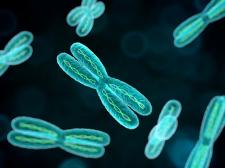Male and Female Stem Cells Derived from One Donor in Scientific First
By Dan Robitzski,
The Scientist
| 12. 22. 2022
Scientists have developed a new line of stem cells—all derived from the same person—that can be used to study sex differences without the confounds of interpersonal genetic differences.
Human induced pluripotent stem cells (hiPSCs), which are cells taken from a person that are then reprogrammed to abandon their current roles and return to a stem cell–like state, have become valuable tools not only for therapeutic purposes but also for probing the genetic mechanisms underlying cell behavior and disease. However, findings drawn from stem cell studies may not be broadly applicable, as the fact that all cells in a given line share the same genetic sequence makes it difficult to generalize discoveries, especially when it comes to investigating potential sex differences.
That’s why a team of scientists led by Benjamin Reubinoff, an embryonic stem cell researcher at the Hadassah Medical Organization in Jerusalem, and MD-PhD student Ithai Waldhorn set out to create a new platform for studying genetic sex differences. As Reubinoff tells The Scientist, “The origin was really to generate a model for studying sex differences, given the...
Related Articles
By Jonathan Matthews, GMWatch | 12.11.2025
In our first article in this series, we investigated the dark PR tactics that have accompanied Colossal Bioscience’s de-extinction disinformation campaign, in which transgenic cloned grey wolves have been showcased to the world as resurrected dire wolves – a...
By Jenny Lange, BioNews | 12.01.2025
A UK toddler with a rare genetic condition was the first person to receive a new gene therapy that appears to halt disease progression.
Oliver, now three years old, has Hunter syndrome, an inherited genetic disorder that leads to physical...
By Simar Bajaj, The New York Times | 11.27.2025
A common cold was enough to kill Cora Oakley.
Born in Morristown, N.J., with virtually no immune system, Cora was diagnosed with severe combined immunodeficiency, a rare genetic condition that leaves the body without key white blood cells.
It’s better...
By Rachel Hall, The Guardian | 11.30.2025
Couples are needlessly going through IVF because male infertility is under-researched, with the NHS too often failing to diagnose treatable causes, leading experts have said.
Poor understanding among GPs and a lack of specialists and NHS testing means male infertility...




